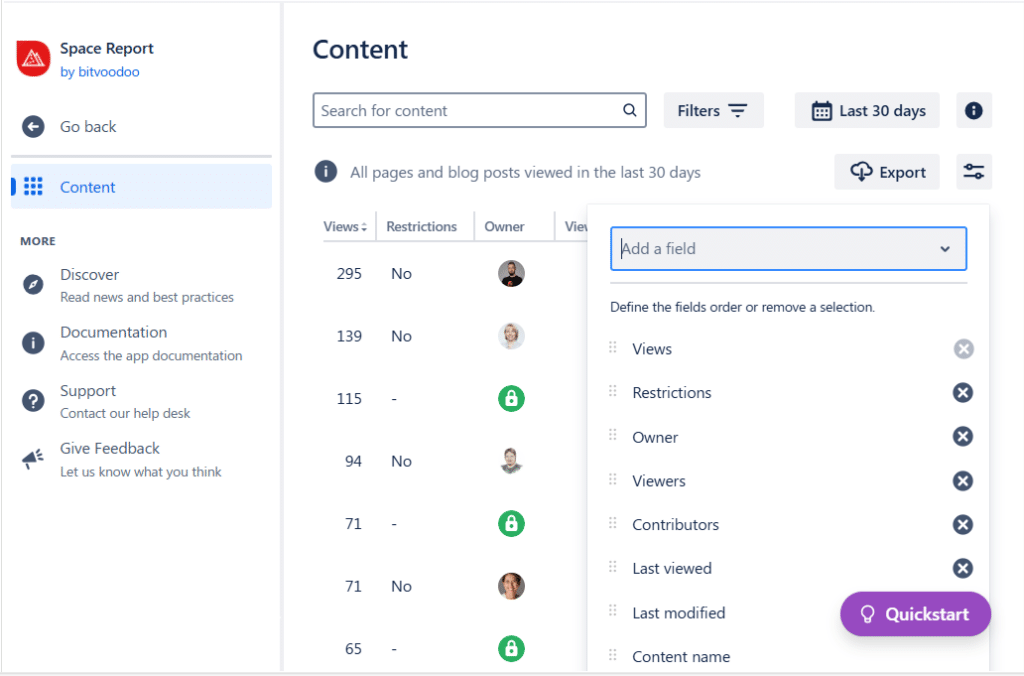News•Viewtracker - Analytics for Confluence
Viewtracker Templates and Label-Based Filtering
How to use Space Analytics Report Templates and filtering by labels with Viewtracker.
Aug 12, 2024Viewtracker – Analytics for Confluence‘s newest release significantly improves the Content & Usage Report. This update allows users to include additional data fields in their reports, making analyzing Confluence spaces and content easier.
Users can now customize their reports by selecting specific data fields to include. This improvement provides a more detailed overview of spaces and content within Confluence. The following new fields are now available:
| Category | Available Data Fields |
|---|---|
| Spaces | Attachment views, Average time spent*, Comments, Contributors, Creation date, Creator, Edits, Engaged users*, Last editor, Last modified, Last viewed, Likes (on comments)*, Likes (on content)*, Number of attachments, Space key, Space name, Viewers, Views. * Currently only available on the Data Center version |
| Content | Attachment views, Average time spent*, Comments, Content ID, Creator, Edits, Engaged users*, Last editor, Last modified, Last viewed, Likes (on comments)*, Likes (on content)*, Number of attachments, Owner**, Page status**, Publishing date, Restrictions, Versions, Viewers, Views, Watches*. * Currently only available on the Data Center version ** Only available on the Cloud version |
This update makes finding answers to questions that would otherwise require extensive manual effort is much easier. For example:
Additionally, any data fields selected in the report preferences will appear in the CSV file when the report is exported.
The expanded data fields are also available in Viewtracker for Confluence Data Center, offering similar analytical depth as in the Cloud version.
While the key use cases remain consistent—such as tracking engagement, identifying valuable content, and supporting content lifecycle decisions—there are differences in the specific fields available on Data Center. For example, “Page Owner”, which is present in the Cloud version, is not available on Data Center. At the same time, Data Center includes fields like “Average time spent”, “Likes”, and “Watches”, which provide additional insight into content history and collaboration patterns.
When Time Tracking is enabled, Data Center also supports limiting tracking to specific spaces, helping organizations focus on engagement metrics where they are most relevant, while maintaining standard view tracking in all other areas.
This flexibility allows teams on Data Center to tailor their reporting setup to their operational needs, using the data that is most relevant to their goals.
A large company’s Confluence administrator must regularly audit space and page activity to ensure compliance with internal content policies. However, the administrator previously had to manually check multiple pages to find restricted content, track down page owners, and review recent edits.
The additional data fields for the Content & Usage Report in Viewtracker can generate a Content & Usage Report that includes access restrictions, last editor details, and ownership information. This enables them to identify restricted pages quickly, see who made the latest changes, and ensure that critical content is adequately maintained—all in just a few clicks.

This update is designed to make Confluence data more accessible, allowing teams to save time and gain better insights into their content usage.
Try Viewtracker for free today and take control of your Confluence reports!